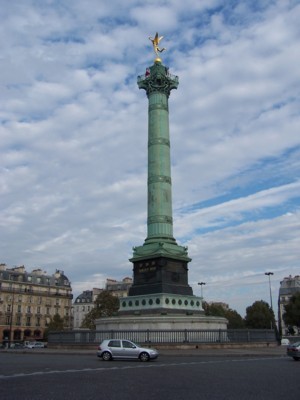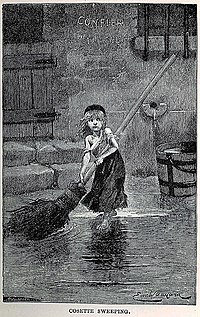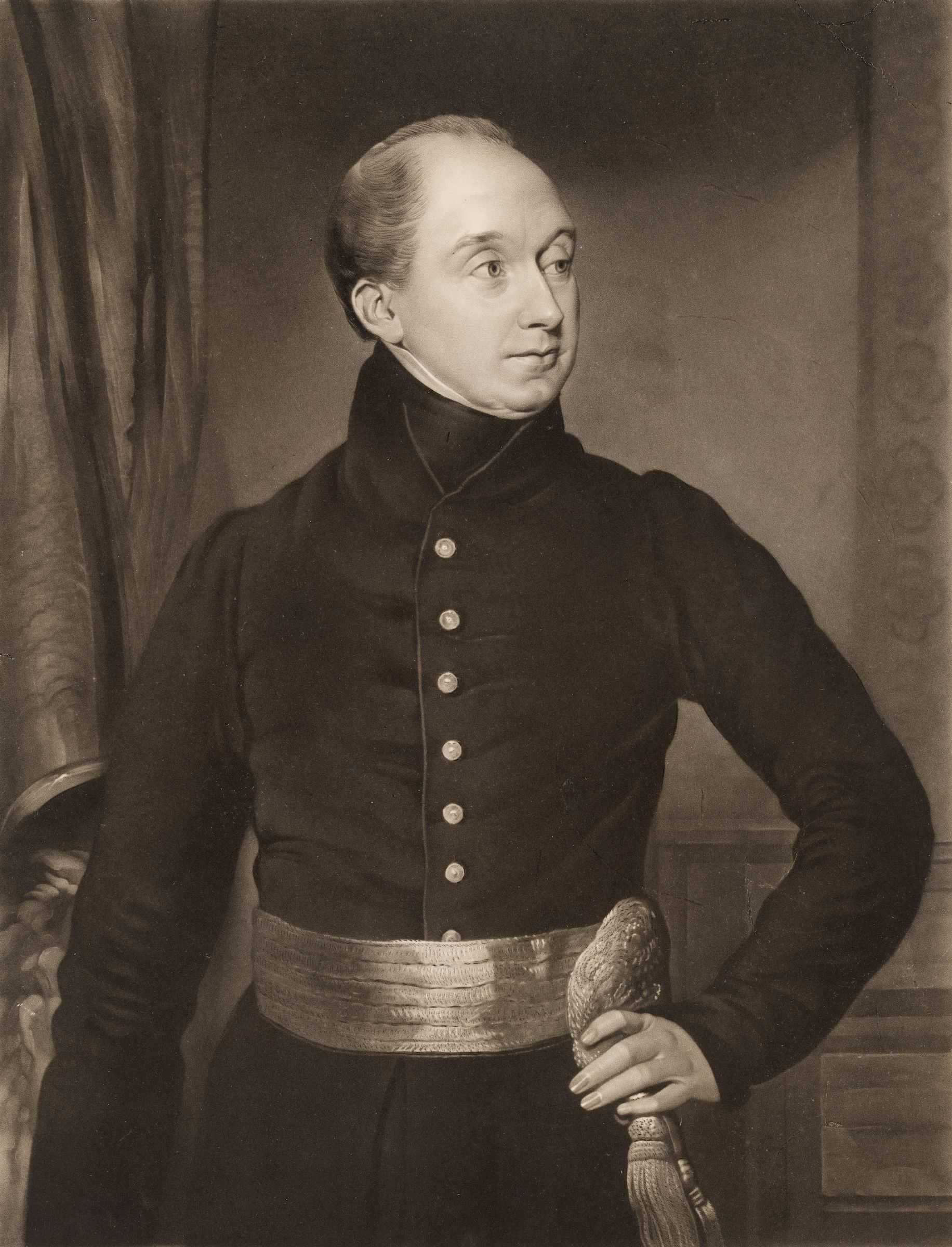The musical Les Misérables has returned to Sydney. By now we have both seen several versions.
But we agreed that this new version is exceptional, with several quite spectacular staging innovations and an excellent cast of singers with perhaps one exception who was nevertheless very good.
Despite an audience that was obviously very familiar with the material (if I'm to judge by the not so sotto voce anticipatory comments from the woman next to us) the production managed to evoke the required tears and laughter in the appropriate places. The packed theatre was clearly delighted and, opera style, the audience shouted approval at and applauded several of the vocal performances, some were moved to a standing ovation at the end.
The Book
Les Misérables (The Wretched or similar) is based on Victor Hugo's novel of the same name first published in 1862 and an early example of the Novel form of storytelling.
The novel was then and remains one of the longest ever written; taking in the sweep of French history from the restoration of the monarchy; after the final defeat of Napoleon; until the Paris uprising in June 1832 (Insurrection républicaine à Paris en juin 1832). This followed closely on the July Revolution of 1830 that deposed King Charles X.
The 1830 revolution was actively supported by Victor Hugo, who wrote the words to a memorial hymn, and commemorated by the Colonne de Juillet that stands in the Place de la Bastille.

Colonne de Juillet - my photo
Like most/all novels, the narrative follows the characters who populate it. Amongst them:
- Jean Valjean, a petty thief who rebels against harsh punishment and remains a criminal until he finds redemption through the agency of a priest, becoming a wealthy factory owner and local mayor.
- Inspector Javert, a policeman who hunts him uncompromisingly for past unpunished crimes and misdemeanours; due to a profound sense of moral and social duty.
- Fantine, an unmarried working class single mother who loses her job when her 'sin' is discovered and who then falls into prostitution and dies; leaving her child, Cosette, in the care of her humanitarian ex-employer (Valjean); who is mortified at the realisation that the loss of her job in his factory led to these dreadful events.
- Cosette, the orphaned child growing to adulthood; protected by Valjean.
- Marius Pontmercy the wealthy yet moral and caring student who falls in love with Cosette on sight.
- Marius' father.
- Assorted revolutionary students who represent the martyrs of the Paris uprising.
- The disreputable publican Thénardier and his even more criminal wife who in the musical provide comic relief.
- Éponine their daughter who proves to be moral when tested; despite her parents, her upbringing and her unrequited love for Marius.
 Éponine at the gate -
Éponine at the gate -
a scene replicated in every production we've seen
The strength of the novel form is that, through invented characters, it reflects how we all experience life through personal experience; rather than as removed observers of the real world; as for example, through the TV nightly news.
Originally a dramatisation in French, it also became a Television mini-series featuring an international cast led by Gérard Depardieu as Valjean and John Malkovich as Javert that actually post dates the Musical.
Les Misérables the musical, in English, opened in London in 1985.
It first came to Sydney in 1989 and was still playing in London when I hired for a car trip around Europe with Emily in 1990. We had a cassette of the sound track and it is heard in background to video footage she made while I was driving; particularly around London and Paris.
The musical influenced a generation of children (particularly girls). Emily was taken to see it when she was ten by her mother, Brenda. Wendy says Jordan was similarly taken to see it, and similarly influenced; as where many of their friends.
The tribulations of the female characters and the threats that assail them touched a strong chord in our young girls, particularly as much of the story hangs around Cosette with whom they are inclined to identify.
 Cosette - as the pathetic child of a single mother
Cosette - as the pathetic child of a single mother
It provided an early introduction to the social subjugation of women encompassing: the tribulations of a single mother; sexual harassment in the workplace; the exploitation of children; and prostitution.
While some men may identify with Valjean, although I can't say that I did or do, or perhaps the students, few would with Javert. This may be because of the limited time available for character development. At the outset Valjean is badly done by but still essentially a criminal who steals the priest's silver. Later he becomes a saviour figure, more a stereotype than a real character.
Javert is the personification of the authoritarian State and repeatedly claims to be doing God's work; determined to apply the law without question however ill-conceived that may be. Although he has more dimension than a pantomime villain we are expected to dislike him (hiss!). Through this character Hugo represents the uncompromising administration of the monarchy and the Church prior to the revolution of 1848; and the new Republic of Napoleon III.
As a sign of its ultimate demise Hugo has Javert commit suicide at the conclusion of the story.
The Period
The first part of the 19th century was an interesting period historically and very relevant to the early colony in Sydney.
Hugo along with other intellectuals was a product of the Enlightenment and the French Revolution. The period following the French revolution in 1789 coincides directly with the foundation of Sydney as a penal settlement and the British colonisation of Australia.
In the thirty years between the June 1832 uprising and the publishing of the novel Paris was substantially remodelled to become the basis of the city we see today. Under Napoleon III and his engineer/architect Baron Haussmann, vast swathes were cut through the most closely-packed areas of the city to create the city's famous sewers and underground services; new parks and its grand boulevards. No longer would epidemics of cholera regularly decimate population; and no longer could hurriedly thrown-up barricades immobilise the city. And should anyone be so foolish, new firing-lines meant that the barricades could be easily be destroyed by artillery; with minimum risk to innocent bystanders or private property.
Tens of thousands of buildings were rebuilt from the 1850's onwards; now with stone facades; according to strict rules as to height; including the differing ceiling heights on each level; to give the entire inner city the appearance of an extended palace. Thus Les Misérables recalls the time immediately before this transformation.
Similarly Les Misérables is about redemption and reformation. That some criminals are capable of reform is the great underlying theme of Les Misérables. This was a radical humanist view at the time. It is the same sentiment that led to the emancipation of convicts to become worthy citizens in New South Wales.
Had Jean Valjean committed his crime in London he may well have been transported to in Botany Bay. In that case he may still have reformed and made good; just as many Londoners and then Irishmen did in Sydney.
Inspector Javert, who is cast as the villain of the story, holds the prevailing view at the time that once a criminal always a criminal. According to this view criminals are born; or perhaps acquire criminality from their family; as most people uncritically acquire the religion of their parents or peers.
The Enlightenment both promoted the idea of individual liberty and questioned the right of the State to impose punishment.
Was incarceration intended to exercise revenge on behalf of the victims of crime; or an example to the criminal and to others contemplating similar wrongdoing; or to simply to remove the criminal from society for a period; or was it an attempt to reform the criminal and return them, thus transformed, to society?
Enlightenment humanist reformers like Scotsman David Hume persuasively questioned the validity of revenge as an appropriate motive for punishment. And if the motive is protecting society from danger why would a criminal ever be released. Raising the likely cost of committing a crime, so that it exceeds the likely benefit, and/or the possibility of reform seem to be the only remaining justifications.
In Australia this debate was the substance of everyday existence and marked the attitudes and relative success of the early governors. Men like Macquarie and Brisbane appreciated the nature of the experiment to reform Britain's petty criminals to create the basis of a new nation; taking a lead from Jefferson's vision for the United States. Against this liberality, others, who saw transportation as punishment; retribution; or society's revenge, wanted a return to the harsh regime of a penal colony. Macquarie was withdrawn after the Bigg Enquiry into his administration found that: emancipists and convicts were unduly influential and well to do. Macquarie was replaced by Brisbane who introduced democratic reforms to reduce the influence of the Governor; but otherwise consolidated many of Macquarie's achievements in citizen building; including universal education to primary level.
This was surprisingly successful; producing a hard working class of people ready to learn; work together and apply new skills in a new land; if a trifle cynical, sceptical and contemptuous of the gullible. These traits passed into the culture. Within a few decades Australia had close to the highest average standard of living in the world.
This was totally unacceptable to London and Governor Darling was sent after Brisbane to put things straight. He deplored that many convicts sent to NSW now lived better than their 'betters', often owning more property or having more influence than middle class Englishmen at home or recently arrived 'free settlers'.
 General (Governor) Ralph Darling - Javert's Sydney equivalent
General (Governor) Ralph Darling - Javert's Sydney equivalent
When two guards (Joseph Sudds and Patrick Thompson) deliberately and openly committed a petty theft to become convicts themselves, Darling no doubt saw this as a dangerous precedent that could see the mass desertion of his guard. He had them bound in irons and sentenced to hard labour.
His detractors in the fledgling Sydney press claimed that this was excessively hash and unnatural punishment; constituting torture. As if to confirm this, one of them (Sudds) promptly died as a consequence of his treatment.
As he attempted to bring the emancipists and still serving convicts to heel, Darling, like Javert, became increasingly authoritarian and isolated.
Darling's oppressive administration in NSW (1831-37) corresponds directly with the failed Paris uprising of 1832, dramatised in Les Misérables; against those of Javert's ilk.
In Sydney the matter was resolved, without revolution, by having Darling exposed as a tyrant in London where the liberals were again in power; occasioning his recall.
Thus just as those represented by Javert precipitated the French Revolution of 1848, Darling inadvertently paved the way for progressive administrative reform; culminating in the first fully elected bicameral parliament in New South Wales in 1856; and ultimately Australia.
The Performance
Our previous theatre outing was to Tosca in the Sydney Opera House. Graham Murphy's production resets it in the 1930's in a fascist State. As it's sung in Italian it's easy to assume that it is Italy although the better known German Nazi Swastikas replace the Italian Fascist eagle and bundle of sticks.
Those vocal performances by international stars at the top of their ability were stunning but of course musical theatre is not expected to reach the same vocal or musical heights as opera.
But it is fair to say that this latest production of Les Misérables has gone close, with several very strong voices, albeit aided by amplification, but most of them better than the recent movie version. The staging of Les Misérables was superior with scene changes accomplished within seconds in full view by the interplay of large moveable sets and projected images onto semi-transparent screens and backdrops. Particularly noteworthy was the death of Javert, who contrary to common sense, seems to fall through space then backwards into a bottomless hole - marvellous.
At the end of the day nothing beats an excellent live performance like this. I thoroughly recommend the experience.
And so we must thank Jordan and Jeff for their Christmas gift of the tickets.
